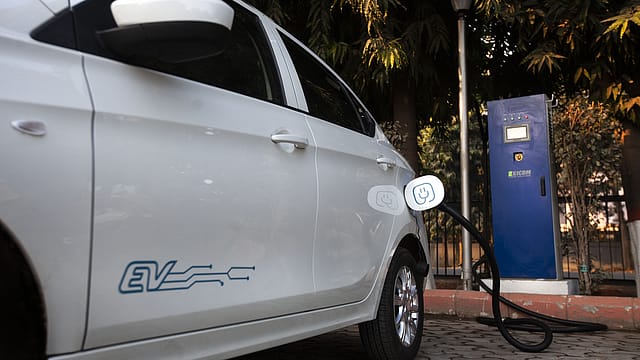India’s automotive ride could hit a speed bump amid rare earth magnet crisis: Crisil
ADVERTISEMENT

Rare earth magnets, low in cost but critical in function, could emerge as a key supply-side risk for India’s automotive sector if China’s export restrictions and delays in shipment clearances persist, according to Crisil Ratings.
A disruption lasting beyond a month can impact electric vehicle (EV) launches, affect production and weigh on the sector’s growth momentum, the rating agency said.
Rare earth magnets are integral to permanent magnet synchronous motors (PMSMs) used in EVs for their high torque, energy efficiency and compact size. Hybrids also depend on them for efficient propulsion. In internal combustion engine (ICE) vehicles, the use of rare earth magnets is largely limited to electric power steering and other motorised systems.
In April 2025, China – the world’s dominant exporter of rare earth magnets – imposed export restrictions on seven rare earth elements and finished magnets, mandating export licences. The revised framework demands detailed end-use disclosures and client declarations, including confirmation that the products will not be used in defence or re-exported to the US. With the clearance process taking at least 45 days, this added scrutiny has significantly delayed approvals. And the growing backlog has further slowed clearances, tightening global supply chains.
December 2025
The annual Fortune 500 India list, the definitive compendium of corporate performance, is out. This year, the cumulative revenue of the Fortune 500 India companies has breached $2 trillion for the first time. Plus, find out which are the Best B-schools in India.
India, which sourced over 80% of its 540 tonne magnet imports from China last fiscal, has started to feel the impact. By the end of May, nearly 30 import requests from Indian companies were endorsed by the Indian government, but none have yet been approved by the Chinese authorities, and no shipments have arrived.
“The supply squeeze comes just as the auto sector is preparing for aggressive EV rollouts. Over a dozen new electric models are planned for launch, most built on PMSM platforms. While most automakers currently have 4-6 weeks of inventory, prolonged delays could start affecting vehicle production, with EV models facing deferrals or rescheduling from July 2025. A broader impact on two-wheelers (2W) and ICE PVs may follow if the supply bottlenecks persist for an extended period,” said Anuj Sethi, Senior Director, Crisil Ratings.
In fiscal 2026, domestic PV volumes are expected to grow 2-4%, while electric PVs could rise 35-40%, albeit on a low base. Electric 2Ws could grow 27%, outpacing overall 2W growth of 8-10%. However, sustained supply tightness could soften this momentum, especially in the EV segment.
During the pandemic, rare earth magnet supplies remained stable, unlike semiconductors, reinforcing reliance on just-in-time inventory without building strategic buffers. However, while semiconductors have a globally diversified supply base, over 90% of rare earth magnet processing is concentrated in China, with limited short-term alternatives.
“The shortage of rare earth magnets is forcing automakers to reassess supply-chain strategies. Despite contributing less than 5% of a vehicle’s cost, these magnets are indispensable for EV motors and electric steering systems. Automakers are actively engaging with alternative suppliers in countries such as Vietnam, Indonesia, Japan, Australia, and the US, while also optimising existing inventories,” said Poonam Upadhyay, Director, Crisil Ratings.
“With applications across EVs and ICE vehicles, a prolonged supply squeeze could disrupt production of PVs and 2Ws, making this low-cost component a potential high-impact bottleneck for the sector. In a constrained supply scenario, magnets may also get diverted to ICE models, which require fewer units, potentially impacting EV growth,” Upadhyay added.
